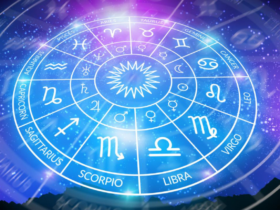The intriguing question of whether love requires a thorough understanding before it can take root often divides opinions. On one hand, there are those who ardently support the idea that love, at first sight, is a concept confined to the realm of fairy tales. On the other hand, a contrasting perspective emerges, asserting that immediate, profound connections are indeed real. In this labyrinth of perspectives, one might wonder: What is the truth? The surprising answer is that both viewpoints hold their own validity. The notion of love, at first sight, is not merely a fanciful construct; it carries tangible weight in reality.
Delving into the 2014 Singles in America survey reveals a fascinating revelation. Within this survey, 59 percent of men and 49 percent of women asserted the reality of love’s sudden onset. Astonishingly, 41 percent of men and 29 percent of women claimed to have experienced this phenomenon firsthand. In unraveling these statistics, it becomes evident that men are more aligned with the narrative of “happily ever after” than one might initially anticipate. This variance from stereotype is anything but coincidental.
Biological anthropologist, Dr. Helen Fisher, offers an insightful perspective on this gender disparity. Dr. Fisher notes, “Men are so visual.” She elaborates that the male psyche is readily ignited by physical allure, catalyzing the rapid activation of the romantic love system. This peculiarity in male response is attributed to the role of testosterone, propelling swift emotional inclinations. In contrast, women, as guardians of the egg, exhibit greater caution in their romantic inclinations.
Naysayers might interject, highlighting the distinction between lust and love. This skepticism is not unfounded, yet Dr. Fisher brings forth an intriguing argument that intertwines these concepts. She elucidates that both lust and romantic love function similarly, driven by testosterone-induced impulses. Crucially, she distinguishes that romantic love is an emotional fixation that mirrors the rapidity of its physical counterpart.
The phenomenon of falling in love is underpinned by the release of dopamine, triggering a euphoria akin to a reward. Dr. Fisher offers a captivating metaphor, comparing the brain scan of a person in love to that of a heroin addict. The shared neural activation underscores the intensity of love’s grip on the human psyche. This complex interplay is governed by three distinct systems: the drive for connection, the depth of attachment, and the impetus for procreation.
Related: When Your Signs Don’t Align: Astrological Tools for Relationship Growth
Romantic love, encompassing fervent desire for emotional connection, possesses a lifespan of 18 months to three years, shaped by evolutionary dynamics. This temporal limitation serves an adaptive purpose, urging individuals to select a partner and forge a bond conducive to rearing offspring. The accelerated nature of romantic love is reflected in the metaphor of “falling” in love, encapsulating the rapidity of this emotional cascade. Dr. Fisher stresses that this phenomenon transcends human experience, resonating within all mammals as an adaptive mechanism for hastening the mating process.
Ergo, if love’s embers ignite rapidly within your heart, dismiss any trepidation. The chronicles of love are authored uniquely, with narratives weaving together at varying junctures, lengths, and intricacies. This revelation shines a light on the malleability of the human experience and the myriad ways that love’s symphony resonates across hearts and species alike.





















